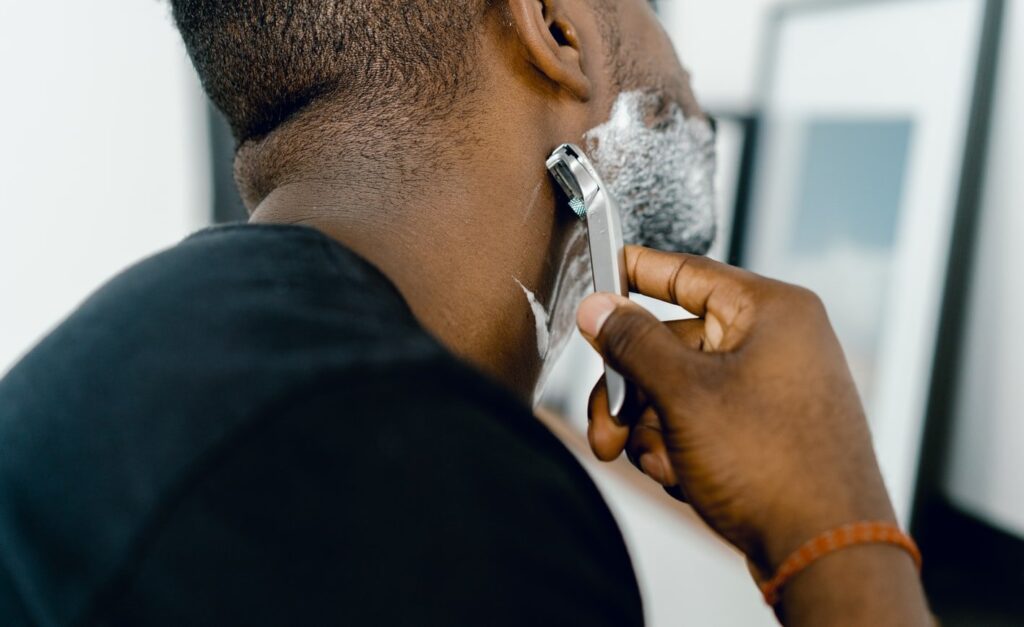Have you ever noticed red swollen spots forming around your face, neck, armpits, and legs after shaving? These irritating patches may be a symptom of razor burn or razor bumps, which are conditions that are usually seen after using a razor or a shaver.
However, even if they are both caused by razors, there is a significant difference between a burn and a bump. Here is a guide to know the symptoms and ways to treat razor burn and razor bumps.
Razor Burn
As previously stated, a razor burn often occurs after shaving a part of the body, but it is commonly seen in the jaw and the underarms.
After a few minutes, red spots will appear on the shaved body part, and once you touch it, it will either be itchy or painful, depending on the severity of the burn. Razor blades that are too dull and shaving aggressively usually give the worst burns, and it may eventually develop into a rash if not treated properly.
Razor burns may heal over time, but when the symptoms are too annoying and uncomfortable, there are several methods to reduce the burn’s pain and irritation
Treatment and Prevention
One of the most effective ways of treating razor burns in by applied Aloe Vera oil in the shaved area. The Aloe Vera plant is typically used to heal irritated skin, but it can also provide moisture to the affected spot to prevent dryness.
Another way to heal the irritated skin is by applying avocado oil if you don’t like the smell and feel of Aloe Vera on your skin.
To reduce the inflammation of the razor burn, it is recommended that you use hydrocortisone cream, which is a universal remedy for swollen parts of the skin. Once you’ve applied the topical cream, you will notice after a few minutes a change in the color of the irritated skin.
After healing the razor burn or even before experiencing it, you should know the various to prevent it from happening.
First, you should regularly change the blades of your razors once or twice a week to prevent using dull blades. Second, you should lessen your shaving strokes, as repeatedly shaving one area may cause your skin to be more irritated because it is already your skin being touched by the razor when there’s no more hair to cut in that area. Lastly, you should shave lightly and avoid being too aggressive or too fast in shaving since our skin is also sensitive to handle forceful touches.
Razor Bumps
Razor Bumps develop after multiple ingrown hairs start to grow in a shaved area after a few days. These ingrown hairs can be much more irritating than a regular razor burn, as they can be quite itchy, and they can be more difficult to treat compared to a burn.
An ingrown hair often appears when the hair before it in its spot is cut off completely, and once these previous hairs are gone, new hairs will grow, but some of them may grow inwards in a curl, which leads to them being unable to escape the skin.
If these ingrown hairs stay in your skin for days, it will cause irritation until red bumps start to appear in their spots.
These razor bumps may look like pimples from the start, but if you take a closer look, you will see tiny hairs trapped in each swollen dot.
Some razor bumps may often have hairs that have exited the skin but reentered it; this kind of ingrown is called extrafollicular, while a hair that is entirely inside the skin is called transfollicular.
Treatment and Prevention
A helpful method for the ingrown hairs to correctly grow out of your skin is by applying salicylic acid on the affected area. Salicylic acid eliminates dead skin cells that trap the ingrown hairs, and it can also reduce inflammation on the bumps.
This method might be painful for some, but you can use a tweezer to pull the ingrown hairs outside your skin. Extrafollicular bumps are easier to pull out because there is already a part of the hair that is outside the skin, but transfollicular bumps will be much harder to tweeze because all parts are trapped inside the skin cells. Be careful in using tweezers for transfollicular bumps, and if you don’t see any visible hair in a bump, don’t try to poke it using the instrument as this can cause more problems for your skin like wounds and infection.
Take note that we are using the word “pull” instead of “pluck” when using tweezers because you shouldn’t take out the ingrown hairs completely. If you pluck it out of your skin, another ingrown hair may replace it.
The best way to prevent razor bumps from happening is to “shave with the grain” or by shaving in the same direction where the hairs are growing.
While razor burns and razor bumps do not cause critical health concerns by themselves, improper treatment is usually the one that can worsen them and cause infection in your skin. Knowing how to treat and prevent burns and bumps is essential for these skin conditions to remain as small problems in our body.


